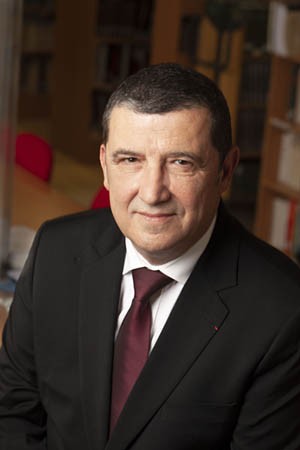Readers sometimes ask: but what would Napoleon have done? Of course, we will never know. However, we do have a concrete example: his attitude towards an incredible scourge of his time: smallpox.
At that time, the disease caused around 400,000 deaths every year in Europe. For 90% of children under 10 years of age who got it, it was fatal. A method of vaccination had been developed in England in the 1770s, consisting of inoculating humans with pus taken from the udders of cows and then later “from arm to arm” this time from human pustules, a method which was successfully perfected 25 years later by Edward Jenner. It is thought that Napoleon was informed of the experiment by Doctor Guillotin, a militant campaigner for the cause of vaccination and a great doctor, even though he is (wrongly) credited with the “invention” of an infamous (but effective) machine for decapitation. From then on, Napoleon never stopped encouraging both public and private initiatives in this domain.
On 11 May 1800, following a report presented to the Institut by Doctor Jean-Noël Hallé and at the insistence of the Duc de La Rochefoucaud-Liancourt, who had just returned from across the Channel, the then First Consul facilitated the creation of a “Comité central de la vaccine” [“Central Vaccination Committee”], intended to encourage the French population to protect themselves against the scourge, without making vaccination compulsory (it would not be so in France until 1902). At the beginning of 1801, a prefectural decree created a “Hospice central de vaccination gratuite” [“Central Hospital for Free Vaccination”] in Paris, presided over by Mrs Dubois, wife of the Prefect of Police. There, Doctor Henri-Marie Husson, later “médecin-vaccinateur des Enfants de France” [vaccinator-doctor of the children of France], administered vaccinations free of charge every Tuesday and Friday afternoon. The institution would soon be placed under the supervision of a “Société pour l’extinction de la petite vérole par la propagation de la vaccine” [“Society for the extinction of smallpox by the spread of the vaccine”], founded by a decree of 4 April 1804. This society, which covered the whole country but was not directly financed by the State before 1809, was presided over by the Minister of the Interior no less, and its board of directors included important personalities such as the scientists (and senators) Berthollet and Laplace, the “grand-maître de l’Université impériale” Fontanes, the “grand-chancelier de la Légion d’Honneur” Lacépède, and renowned doctors such as Corvisart, Guillotin, Pinel, Hallé, Coste and Leroux. Husson was made General Secretary and a commission of fifteen specialists was entrusted with the task of organising the manufacture of vaccines throughout the Empire.
Twenty-five depots were set up so that each major town could supply the vaccines to doctors who requested them. At the instigation of the surgeon of the Guard, Larrey, the army chief medical officer Coste, and the famous Parmentier, general inspector of the health service, collective vaccination programs were put in place in the armies but had little success: only 6,000 men were vaccinated in the Boulogne camp (out of a total of over 100,000 soldiers) and barely more than 3,000 in 1807.
The Emperor followed these initiatives closely however and encouraged them. After the decision to finance from public funds the Society for the Extinction of Smallpox, newspapers were obliged to have their texts on the subject validated by the Academy of Medicine, prefects were instructed to develop the vaccine and organise training of doctor-vaccinators in their departments, and to propose free vaccination for children from poor families.
On 11 May 1811, Napoleon finally set the supreme example by having the King of Rome vaccinated, just as Louis XVI had vaccinated the Dauphin twenty-five years earlier. The news, duly relayed in the press, had a decisive impact. Our own minister for health here in France Olivier Véran and Jerome Salomon (director general of health) could do worse than to follow this example, livestreamed on TV, when the time comes.
It is estimated that by the end of the Empire, one child in two had been vaccinated. From 1812 onwards, vaccination was mandatory in public establishments, schools, colleges and armies, a policy which led to a sharp decline in smallpox, though acute but localised episodes never disappeared completely. In any case, today there are no longer epidemics of smallpox as devastating as those of 1719-1723 or 1796, which caused 35,000 and 14,000 deaths respectively, in Paris alone.
While smallpox caused 5.4% of deaths in the 18th century, and 4.8% during the Revolution, it accounted for only 1.8% of deaths at the end of the Empire. The number of cases had fallen by 75% since 1789. This was the greatest success of the Napoleonic “public health” policy (an anachronistic, but easy-to-understand term). Once the risks of “arm to arm” vaccination had been eliminated, mass vaccination became the norm in France and throughout the world. It was generalised in 1958 (that’s basically when me and my schoolmates were lining up, in just our vests, outside the school nurse’s office). The WHO declared the eradication of the disease in 1980.
Thierry Lentz is a historian and director of the Fondation Napoléon
See also here emeritus professor Alex Grab’s article on smallpox in Napoleonic Italy.


